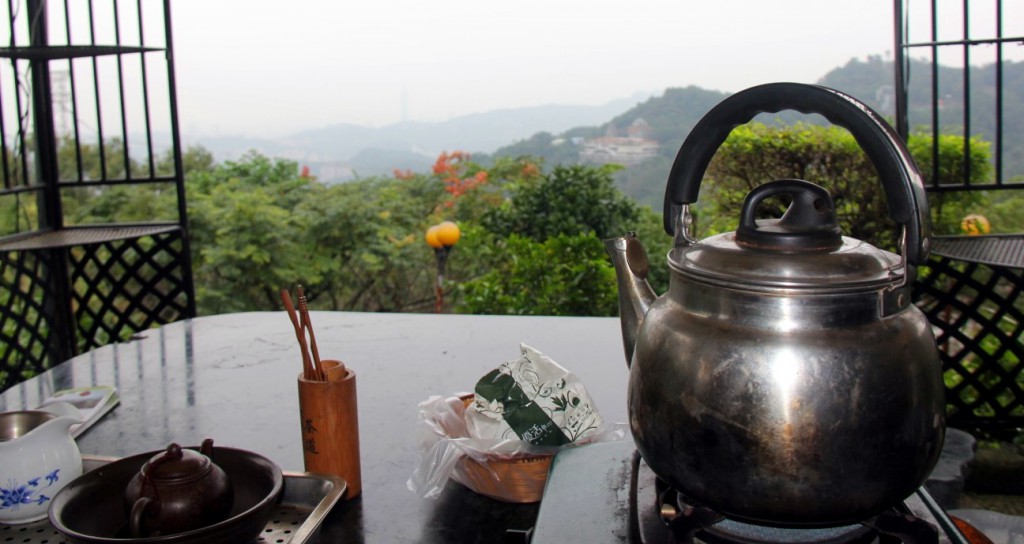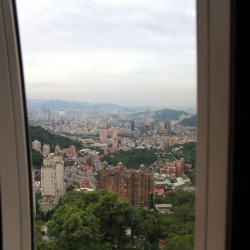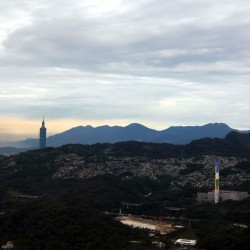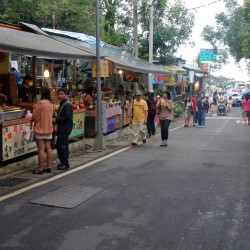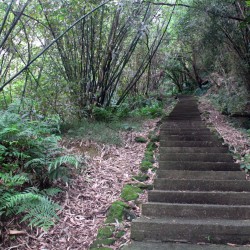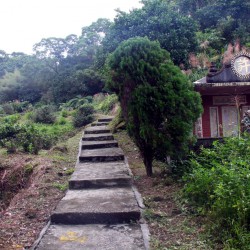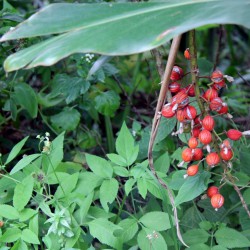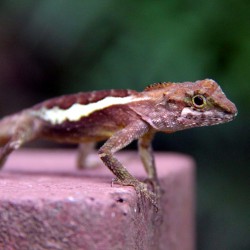The Maokong Gondola is a convenient half-day trip from Taipei. It goes up a hill of tea plantations and, on a clear day, allows magnificent views over Taipei. The starting point is at the end of one of the Taipei MRT lines. The gondola is integrated in the Taipei public transport system and the EasyCard can be used to access it.
At the top station there is plenty of food (as everywhere in Taiwan) and a crazy number of teahouses. This area can get quite crowded, particularly on weekends. However, for those willing to invest a little exercise the crowd can be escaped on one of the many hiking trails. We found a very cosy teahouse on one of the trails and for the first half hour were its only guests!
The trail consists mainly of stone steps. The stones can get very slippery when wet, but apart from that, it’s an easy hike. Mosquitos of the very aggressive kind are abundant. We didn’t bring a repellent and ended up with painful bites that swelled up to 4cm in diameter. Apart from the mosquitos, it’s a very beautiful, scenic area. The trails lead through rainforest, tea plantations, and religious buildings ranging from small altars to the impressive Zhinan Temple (指南宮).
Our visit to the teahouse was as follows: Upon arrival, we were presented a tea menu and a food menu. We had already eaten, so we went for tea only. The tea prices seemed high at first sight (some TWD 400.- for a bag), but one bag allows a tea ceremony for 4-6 persons of more than an hour. (I write ceremony, because it’s not just pouring hot water on a couple of tea leaves.) The unused leaves (we didn’t even use half of them) we could take home.
We chose the “high mountain tea” (I don’t remember the exact characters) and were served a bag of tea leaves, a tablet with a grid, a small teapot with a lid and a bigger teapot w/o a lid on top of the grid, cups, a tea strainer, an electric stove with a kettle, and a couple of tools which serve to place and remove the tea leaves into and from the small pot.
Then we were explained the art of tea brewing — in Chinese. I didn’t understand everything and therefore we made a lot of mistakes. Fortunately, a tea session consists of many iterations so we could be corrected by the owner and improve upon the corrections. According to what we learned, this is how it works:
The first round is to wash the leaves and pre-heat the pots and cups:
- Fill the small pot with dry leaves.
- Pour hot water onto the leaves.
- After 50s, pour tea through the strainer into the bigger pot.
- Pour from big pot into cups.
- Pour from cups onto the grid of the tablet (waste water is collected underneath)
The first round is followed by five to seven rounds of infusion:
- Put hot water onto the wet leaves, put the lid on top.
- After 40s, pour tea through the strainer into the big pot.
- Pour tea from big pot to cups.
- Enjoy.
- Repeat.
Then the leaves are removed from the small pot and fresh leaves are added using the various tea tools to start the procedure over again by the first round.
To measure the brewing time, the professional tea brewer doesn’t need a timer. When pouring the water onto the leaves in the small pot, some water is poured over the teapot itself. (The teapot is on the tablet grid, so the tablet catches the excess water.) When the water on the teapot has evaporated, the brewing time is over.
